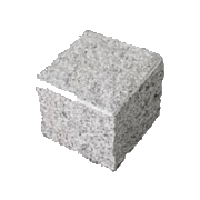As Stargardter stumbling is part of everyday life. Curbs, stairs, roots or just things that are in the hallway on the floor, and were not there when I went by there the last time. You get used to this fact as such and the occasional blue toe associated with it. But: You can also stumble over other things than objects.
The cause of tripping over sidewalk edges or roots is simple: I can not at all or not in time see the obstacle. Especially at night in the city with dim lights, it's not always clear whether the line in front of me marks a difference in height or just a change in the surface of the pavement. I then step into the void and stumble. Or I expect a change in height that is not there and I kick into the ground. In a dimly lit staircase that has a brightly coloured flooring, I have to feel ahead with my feet to get the first step correctly. A funny case is puddles: While I see that the ground is wet in front of me, I can't always tell, whether it's just a simple wet spot on the pavement or a puddle with a depth. Since I don't want to walk around every dark spot that appears in front of me on the floor, I walk right through the middle. If it's a puddle, water will be splashing, it is a deep puddle, my leg will get wet or the water is running into my shoe. And if it's a hole I will stumble.
Wet socks or blue toes (thankfully my ankles are very sound) are concrete and comparatively simple consequences of stumbling. More difficult to assess is the "social" stumbling. Here there are two types of curbs or holes or roots. The first type is known as a faux pas. Probably all make one of those every now and then, and they have little to do with seeing or not seeing. The second type concerns me more: It's not about doing things because you don't see something, it's about not doing things because you don't see anything. I stumble in the sense that I do not react as is appropriate or customary, or simply as I would want to. For example, the statement that "he looks much better than the last time, I think he's better. " has it's problems. Honestly, I can not affirm or deny it. To see if someone is feeling good or bad, the signs have to be very clear. When a person plays over his or her bad mood or condition, I have no reason to inquire about their welfare. Circles around the eyes or pale skin are not enough, there would have to be a hoarse voice or an arm sling or crutch so that I realize that something is not right.
Only when other people make a remark about how someone looks I notice that kind of stumbling, that I have once more not noticed something. I then ask myself where else I stumble without realizing it ...
